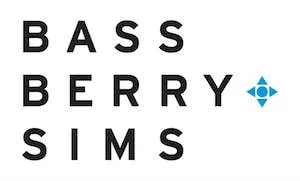- with readers working within the Retail & Leisure industries
- within Coronavirus (COVID-19), Environment and Compliance topic(s)
Congress established a new Rural Health Transformation (RHT) Program earlier this year as part of the passage of budget reconciliation legislation, commonly known as the One Big Beautiful Bill Act. Providers and other stakeholders seeking to partner with states under the RHT Program should understand the overall structure and goals of the program and sample strategic initiatives identified by the Centers for Medicare & Medicaid Services (CMS) to best position themselves for participation.
Overview & Goals
The RHT Program provides $50 billion over the course of five years to strengthen rural communities and improve healthcare access, quality, and outcomes.
CMS will implement the RHT Program in conjunction with the states. Of the total $50 billion in funding allocated under the RHT Program, half of these funds will be shared equally among all participating states, while the other half will be directed by CMS based on various factors, including rural population, the proportion of rural health facilities in the state, the situation of certain hospitals in the state, and other factors to be specified by CMS in a RHT Program Notice of Funding Opportunity (NOFO).
CMS has made available a transcript, slides, and a recording of a recent webinar presentation held on September 19 and September 25, which provide additional details and address stakeholder questions.
The funding awarded under the RHT Program aims to support five strategic goals:
- Make rural America healthy again: Support increased innovation and access to improve disease prevention, chronic disease management, behavioral health, and prenatal care.
- Sustainable access: Help rural providers improve efficiency and sustainability to become long-term access points. For example, the RHT Program aims to have rural facilities work together—or with high-quality regional systems—to share or coordinate operations, technology, primary and specialty care, and emergency services.
- Workforce development: Recruit, attract, and retain high-skilled healthcare workers, including developing a broader set of providers to serve rural communities, such as community health workers, pharmacists, and individuals trained to help patients navigate the healthcare system.
- Innovative care: Spark growth and innovation to improve health outcomes, coordinate care, and promote flexible care arrangements. Examples include implementing payment mechanisms incentivizing providers or Accountable Care Organizations (ACOs) to reduce healthcare costs, improve quality of care, and shift care to lower cost settings.
- Tech innovation: Foster the use of innovative technologies to increase efficiency in and access to digital health tools. Examples include projects that support access to remote care, improve data sharing, strengthen cybersecurity, and invest in emerging technologies.
Eligibility & Applications
The RHT Program accepts applications from state governments and encourages all 50 states to apply. The District of Columbia, U.S. Territories, individuals, and all other entities are not eligible to apply, including local governments, hospitals, universities, and rural healthcare providers. Each state application must come from a state governmental entity and include a letter of endorsement signed by the governor. There can be up to 50 awards, but the primary recipient of each award is a single state.
Applications must include various information and attachments required by CMS under the NOFO, including narratives that describe the proposed project and budget for use of funding. RHT Program funding can be used for certain purposes set out in the legislation and the RHT Program NOFO, including: transforming care delivery; improving healthcare access, quality, and costs; expanding or enhancing services; investments in technology and infrastructure; and startup costs. The funding cannot be used for certain items listed in the NOFO, including new construction, clinical services that duplicate billable services and/or attempt to change payment amounts of existing fee schedules, and wages that subject clinicians to non-compete limitations.
States must submit completed applications by November 5, 2025, and the expected funding award date is December 31, 2025, with the RHT Program likely starting early 2026.
Provider & Stakeholder Involvement
Although not directly eligible to submit an RHT Program application, providers and stakeholders will still play an important role in partnering with states.
While states do not have to identify in their RHT applications specific providers with which they plan to partner, the official application does require consulting with key rural stakeholders and a description of how those stakeholders will be involved as part of the state's proposal, including rural hospitals, Federally Qualified Health Centers, provider associations, universities, health departments, primary care providers and clinics, community leaders and patients.
Providers that collaborate with states in the application process may be granted a sub-contract or sub-award at the discretion of the applicant state if awarded the funding. Healthcare providers could also receive payments for healthcare items and services, subject to the funding policies and limitations in the NOFO. In addition, providers could collaborate with states prior to the RHT Program application deadline to provide feedback on the state's proposal to address strategies and initiatives best suited to their operations, clinicians, and patients.
For example, CMS describes existing initiatives in the NOFO that could serve as application starting points and align with the RHT Program strategic goals. Providers and stakeholders with experience administering or participating in these or similar initiatives are in a particularly strong position to collaborate with states in the RHT Program. The various categories and examples highlighted by CMS include:
- Population health infrastructure initiatives: Initiatives that facilitate rural beneficiary access to care and preventative services, such as the Community health workers – Rural Health Information Hub and Scenic Bluffs Community Health Centers Help Team.
- Rural health network initiatives: Examples included various clinically integrated networks, such as SERPA and the Rough Rider Network, that help rural providers improve healthcare delivery, coordination, and outcomes.
- Rural health regional excellence initiatives: Projects that provide support to rural providers to form arrangements and affiliations with quality regional health systems, such as Project ECHO New Mexico and the Vermont Hub-and-Spoke Model of Care for Opioid Use Disorder.
- Rural talent recruitment initiatives: Examples included initiatives that develop, recruit, and retain individuals who support healthcare services in rural communities, such as those developed by the Health Resources & Services Administration.
- Value-based care initiatives: Initiatives that help rural providers join value-based care models, including through ACOs, highlighted by Rural Health Value.
- Remote services initiatives: Various telehealth initiatives that help rural providers use remote care services to improve outcomes, quality, and prevent and manage chronic disease.
- Interoperability infrastructure & rural tech catalyst fund initiatives: Projects that help rural providers invest in technology infrastructure to improve data interoperability, similar to the CMS/ONC interoperability framework, and other tech solutions that accelerate improved quality and expanded access, including the Digital Health Sandbox Program.
Though the deadline for submitting feedback has passed in most instances, certain states are still accepting feedback and suggestions from providers and other stakeholders until at least October 10, 2025, including Arkansas, Tennessee, and North Carolina.
With each state having the ability to implement a unique application, it will also be important for providers and other stakeholders to monitor developments and adopted proposals applicable to their operations. For example, New Mexico initially drafted legislation that would exclude for-profit hospitals from receiving RHT Program funds. While this provision was removed from the legislation that was passed, this example highlights the importance of providers monitoring the activity within their state to ensure they maintain the opportunity to participate in the RHT Program.
The content of this article is intended to provide a general guide to the subject matter. Specialist advice should be sought about your specific circumstances.





